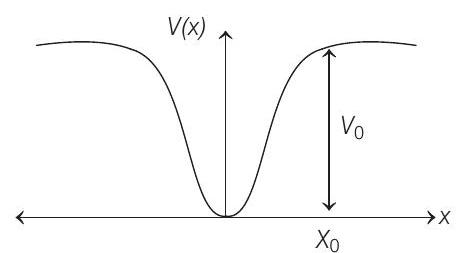Simple Harmonic Motion 5 Question 8
13. A particle of mass
(a) proportional to
(b) independent of
(c) proportional to
(d) proportional to
Passage Based Questions
Passage
When a particle of mass
(2010)

Show Answer
Answer:
Correct Answer: 13. (a)
Solution:
Now, time period may depend on
Equating the powers, we get
Hence,






